
LIF Image Processing Software
Quantitative LIF imaging relies on accurately mapping the florescence light-intensity collected by a camera into physical units, such as concentration or temperature. Towards that end, two dedicated software modules are available in LaVision DaVis: the LIF software base module (1-color) and the add-on LIF ratiometric software module (2-color). The complex workflow of quantitative scalar-imaging includes noise-filtering and masking, background, laser-sheet and flat-field corrections, and finally a calibration which converts the processed signal intensity to the desired physical unit. The new LIF Image Processing module streamlines this workflow by introducing a fully integrated processing-dialog that incorporates all required processing steps in a single operation.
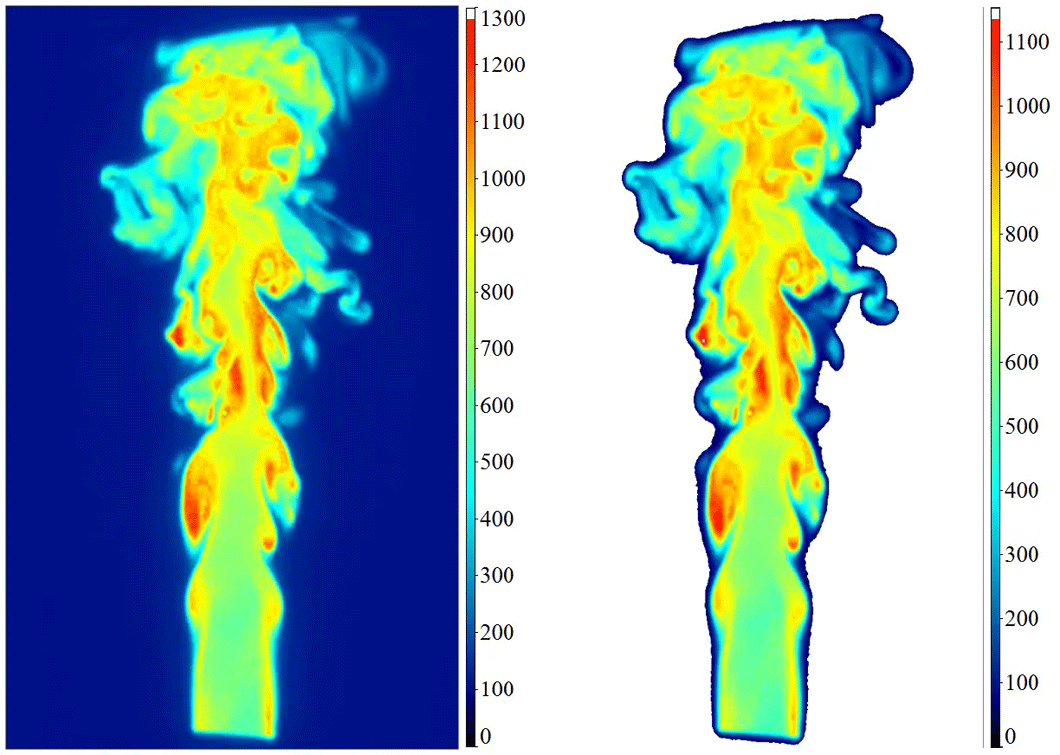
and Filtered
Image Pre-Processing
The accurate quantification of LIF signals requires the application of numerous processing steps prior to calibration. These are seamlessly integrated in an interactive dialog which includes:
- Geometric masking to restrict the calculation to the user’s area of interest
- Background subtraction and flat-field correction routines to account for cameras dark current, inhomogeneities, vignetting and image distortion effects
- Intensity corrections to compensate for laser energy fluctuations
- Masking filters to reject areas with low intensity and poor SNR
- Noise filtering routines using spatial (Gaussian) smoothing
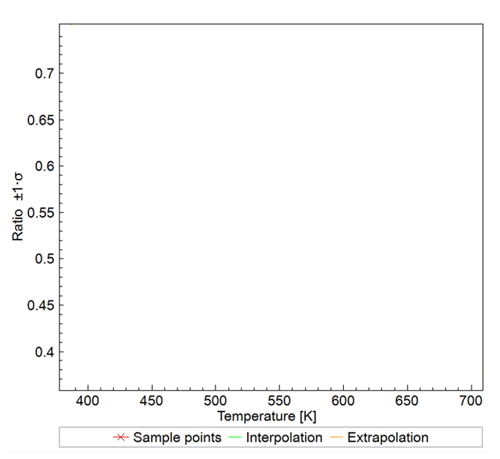
LIF Signal Calibration
LIF images at specified calibration conditions must be recorded and processed in order to quantify the relationship between the photo-emission response of the tracer and the quantity of interest. The new LIF Image Processing allows the user to:
- Generate calibration curves for a wide range of scalars including pH values, dye and species concentration, soot concentration via LII and gas/liquid temperature
- Select suitable fit models
- Use pre-defined sequences for automated calibration
- Achieve sub-pixel mapping for high fidelity 2-color ratiometric LIF
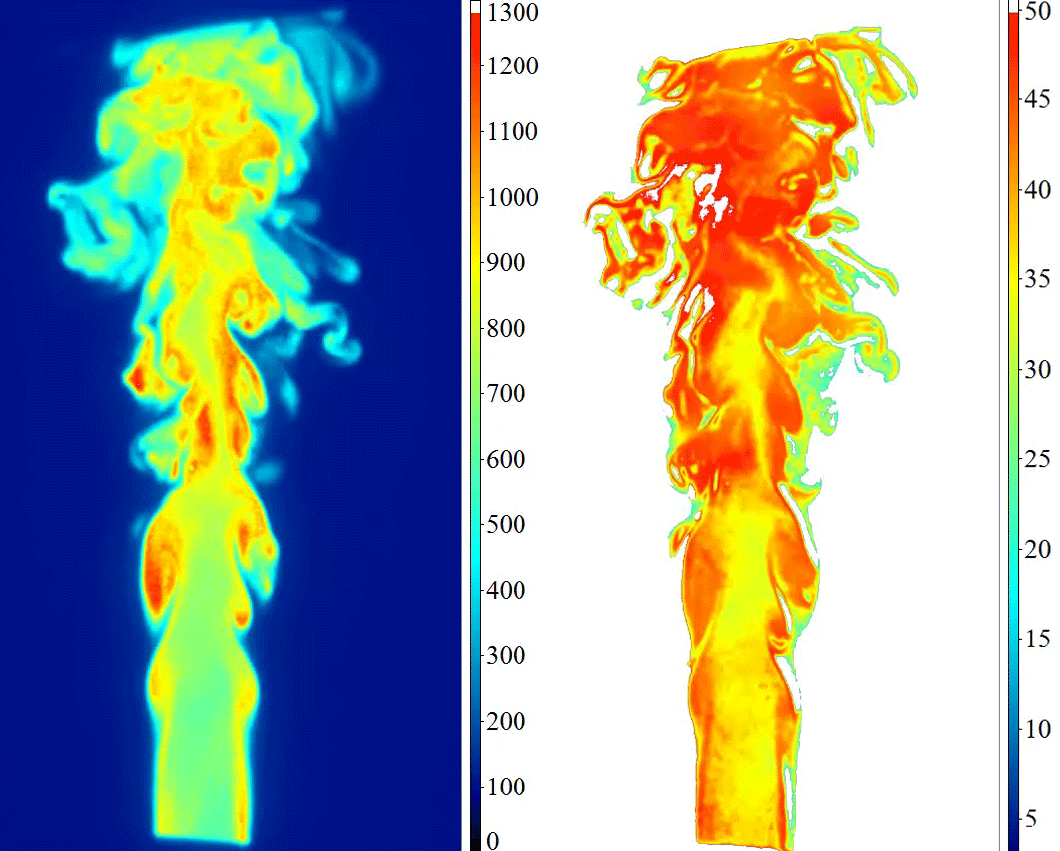
SNR Analysis
The final 2D map of the measured scalar contains additional signal-to-noise (SNR) and measurement-uncertainty distributions. This allows the user to:
- Quickly and intuitively gauge the fidelity of the measurement on a per-image basis and in a space-resolved manner
- Identify and isolate areas with reliable content based on locally high SNR
- Optimize pre-processing operations to boost the SNR of the measurement in conjunction with the desired spatial resolution
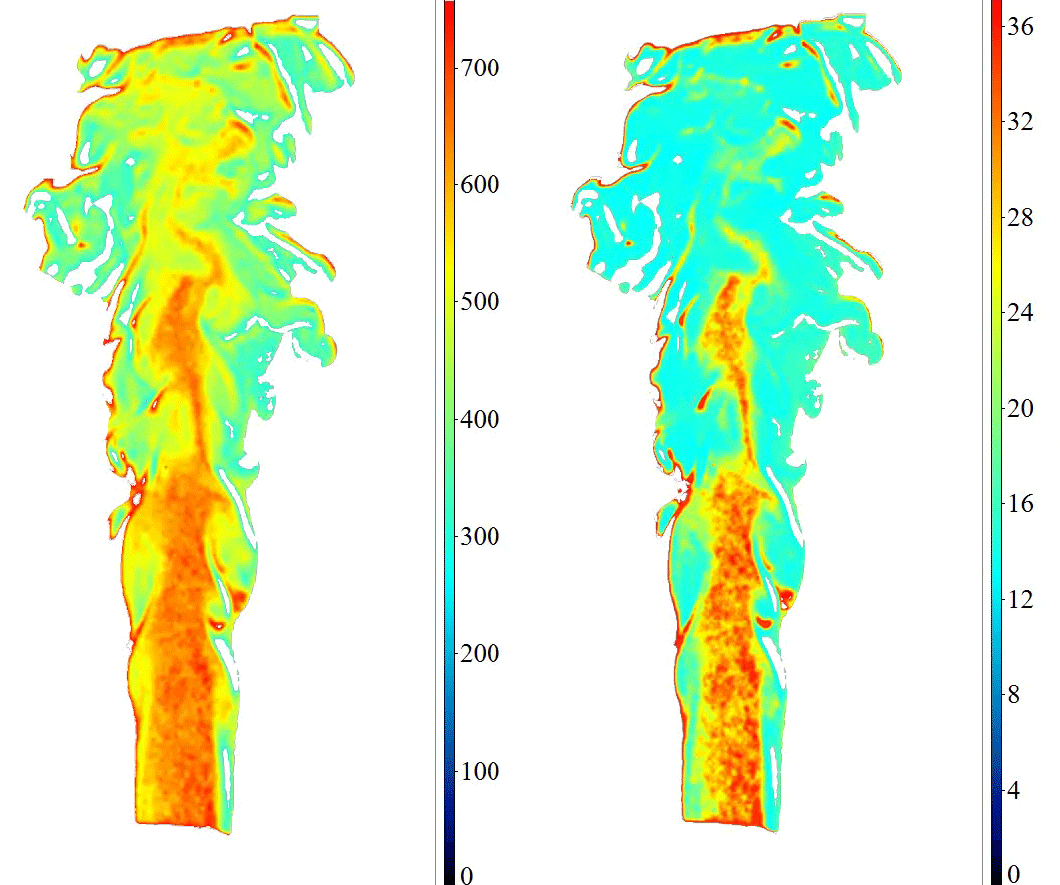
Uncertainty Analysis
Measurement uncertainties from photon and camera noise, and uncertainties during the calibration and data-processing are considered in the analysis:
- independent treatment of random and systematic uncertainties
- uncertainty quantification and propagation at each processing step
- visualization of the individual and total uncertainties of the intermediate and final measurement results
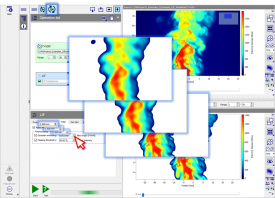
Interactive Live Processing
The LIF software features fast processing with live-preview updated at any change of the processing-parameters. Consequently, the user interface updates the result in real time, allowing the user to seamlessly experiment with the parameters of the workflow, thus facilitating the optimization of data processing.


